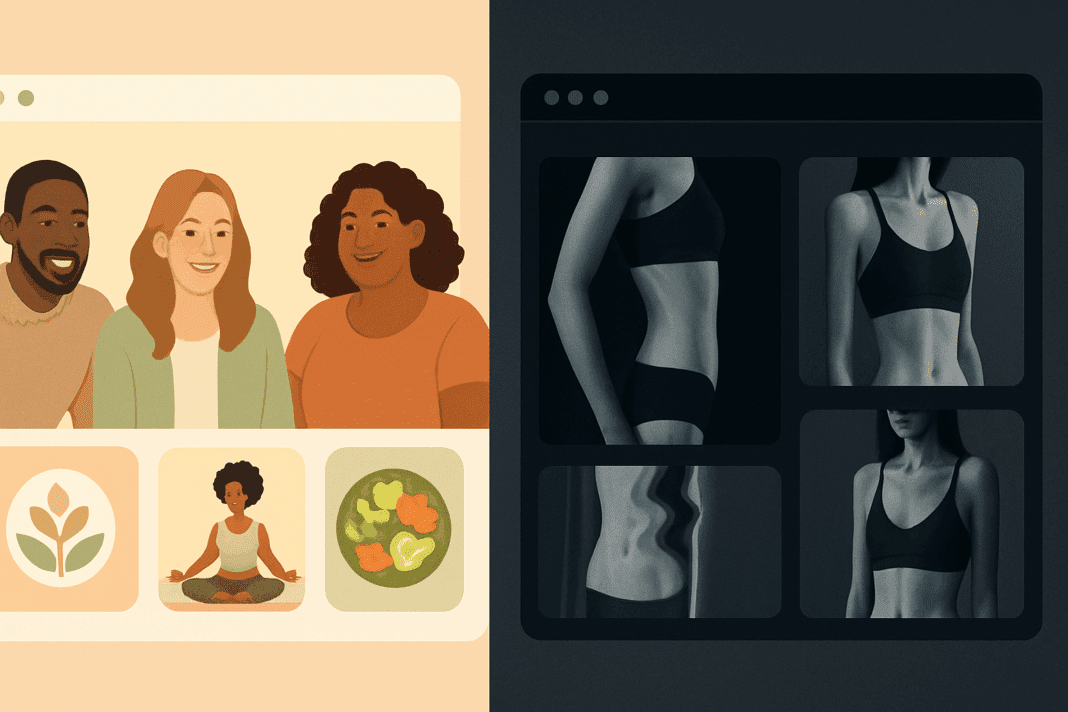In the era of digital connectedness, the internet has transformed how we access information about health and wellness. While this has opened doors to vital resources and supportive communities, it has also allowed harmful content to flourish. Among the most concerning trends is the proliferation of pro ana websites—digital spaces that promote disordered eating behaviors under the guise of lifestyle choices or motivational support. For those navigating mental health challenges or seeking guidance on nutrition, these sites can present a serious risk to both physical health and psychological well-being.
You may also like: How to Stop Emotional Eating and Regain Control: Mindful Nutrition Strategies That Support a Healthier Lifestyle
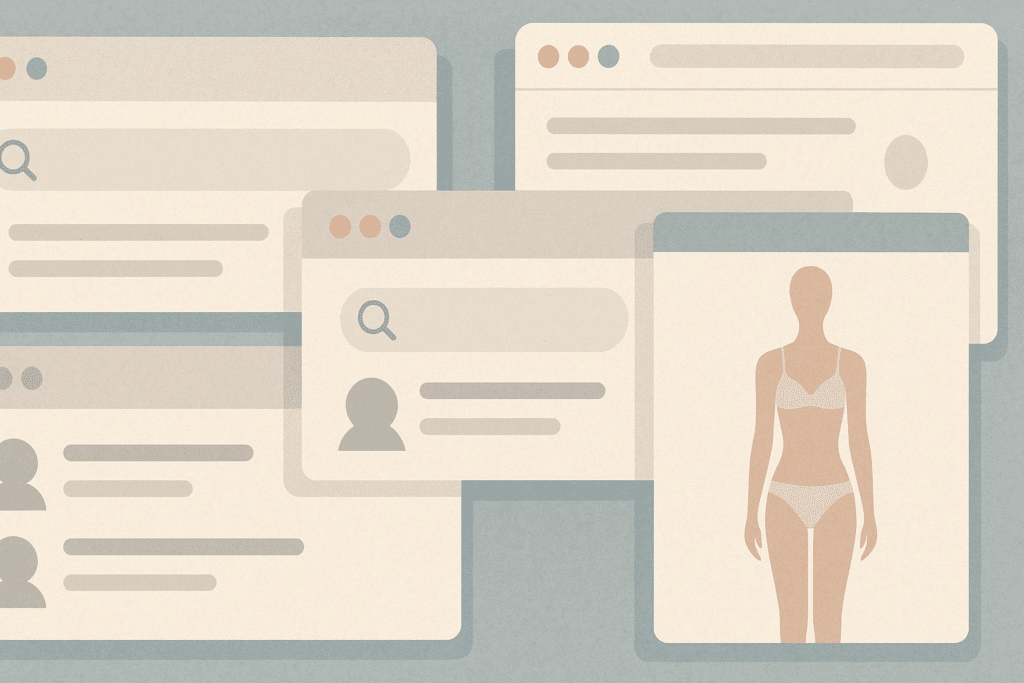
What the Term “Pro Ana” Really Means in Digital Spaces
Understanding the term “pro ana” is key to contextualizing its dangers. Derived from “pro-anorexia,” the term encompasses a wide range of online platforms that glamorize, encourage, or normalize anorexia nervosa and similar eating disorders. These platforms often go by various names such as pro ana sites, pro anorexia web pages, and even pro skinny websites. Whether labeled as a pro ana homepage or appearing as a niche pro ana blog, the core content typically promotes extreme calorie restriction, obsessive control over food intake, and emaciation as an ideal.
How Pro Ana Sites Promote Disordered Eating and Distorted Wellness
The proliferation of these sites has led to the creation of entire communities centered around disordered eating. Some are known as ana mia forums, reflecting the co-occurrence of anorexia (“ana”) and bulimia (“mia”). These communities often share pro eating disorder tips and strategies to suppress hunger, conceal weight loss from family and friends, and maintain unhealthy behaviors without detection. Phrases like “pro mia” or “pro ana message board” reveal how these spaces serve as echo chambers, reinforcing dangerous ideologies under the veil of support.
Thinspiration, Control, and the Identity Trap of Pro Skinny Websites
One of the most insidious aspects of pro ana websites is how they blur the line between empowerment and pathology. These sites often use aesthetic elements—minimalist designs, black-and-white photography, and aspirational messaging—to position disordered eating as a form of personal control or artistic expression. Thinspo websites, short for “thinspiration,” commonly display curated images of underweight bodies with quotes that romanticize starvation or pain. The pro ana web becomes not just a source of information, but an environment that cultivates identity around illness.

The Psychological Impact of Pro Anorexia Content on Mental Health
While some might dismiss these sites as fringe or niche, their impact is alarmingly widespread. Research indicates that exposure to pro anorexia tips or pro ana diet advice can increase body dissatisfaction, anxiety, and depressive symptoms, even after short viewing periods. Particularly among adolescents and young adults, who may be grappling with identity formation and peer comparison, these messages can deepen insecurities and normalize harmful behavior. For individuals recovering from an eating disorder, stumbling upon a pro ana site can trigger relapse and undo months or years of progress.
Why Pro Ana Diets Are Dangerous to Nutritional and Physical Health
Moreover, the content on pro ana sites often contains medically inaccurate or dangerous nutritional guidance. It is not uncommon to see users advocate for diets consisting of fewer than 500 calories per day or promoting laxative abuse as a weight control method. These pro eating disorder tips are presented without disclaimers or warnings, misleading readers into believing that such practices are safe or effective. The lack of oversight or regulation on many of these platforms further amplifies the risks.
How Social Media Amplifies the Reach of Pro Ana Web Content
Mental health professionals express growing concern over how these sites distort the concept of health. The proana meaning extends beyond weight loss to encompass a rigid, perfectionistic mindset that rejects nourishment and celebrates control at all costs. In this worldview, self-worth is directly tied to body size, and food becomes an enemy rather than a source of energy and pleasure. This distorted relationship with food and the body can severely impact one’s emotional stability, cognitive functioning, and social engagement.

The Emotional Appeal Behind the Pro Ana Blog and Message Board Culture
Even the language used within these communities can be harmful. Terms like “bonespo” (bone inspiration) or coded phrases such as “ABC diet” (an acronym for a dangerously restrictive meal plan) circulate frequently among users. These linguistic codes serve not only to disguise harmful intent from outsiders but also to reinforce group identity. In effect, the pro ana blog or pro anorexia web community becomes a space where harmful behaviors are not only accepted but valorized.
Why Recovery Becomes More Difficult Amid Pro Pro Ana Influence
Parents, educators, and healthcare professionals are often unaware of the prevalence and reach of these websites. With pro ana message boards often masquerading as wellness blogs or personal journals, they can be difficult to identify, especially for those not attuned to the language and imagery they employ. This camouflage adds to their potency, allowing harmful ideologies to be disseminated under the radar.
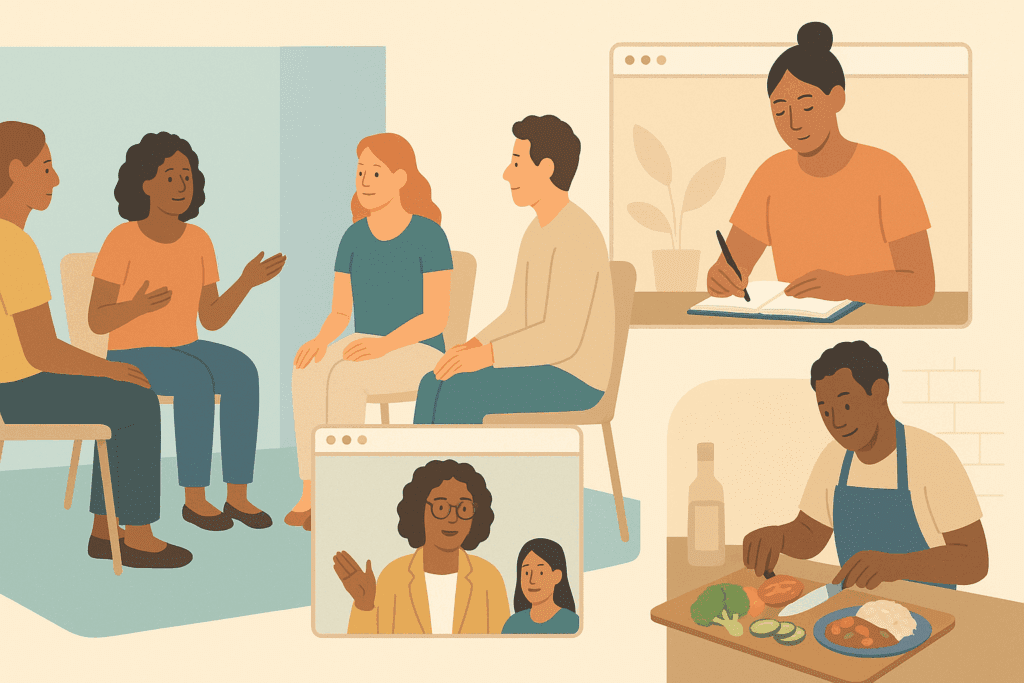
What Health Professionals Can Do to Address Pro Eating Disorder Messaging
The impact on physical health is equally severe. Malnutrition, electrolyte imbalance, and organ failure are well-documented consequences of sustained disordered eating. Individuals influenced by the pro ana diet often ignore hunger cues, delay medical treatment, and experience cognitive decline due to inadequate nutrient intake. Long-term participation in pro ana communities may also delay diagnosis or deter individuals from seeking professional help, reinforcing a cycle of self-harm.
Challenging the Cultural Ideals That Fuel Pro Anorexia Web Trends
Social media has further magnified the reach of pro anorexia content. While platforms like Instagram and TikTok have instituted guidelines against thinspo websites and similar content, users frequently find ways to circumvent these restrictions using coded hashtags or alternate spellings. A pro ana homepage may not always be a standalone website—it might be a well-followed Tumblr blog or a secret Reddit thread. These spaces offer anonymity, a sense of belonging, and continuous reinforcement of disordered behaviors, making recovery more difficult.
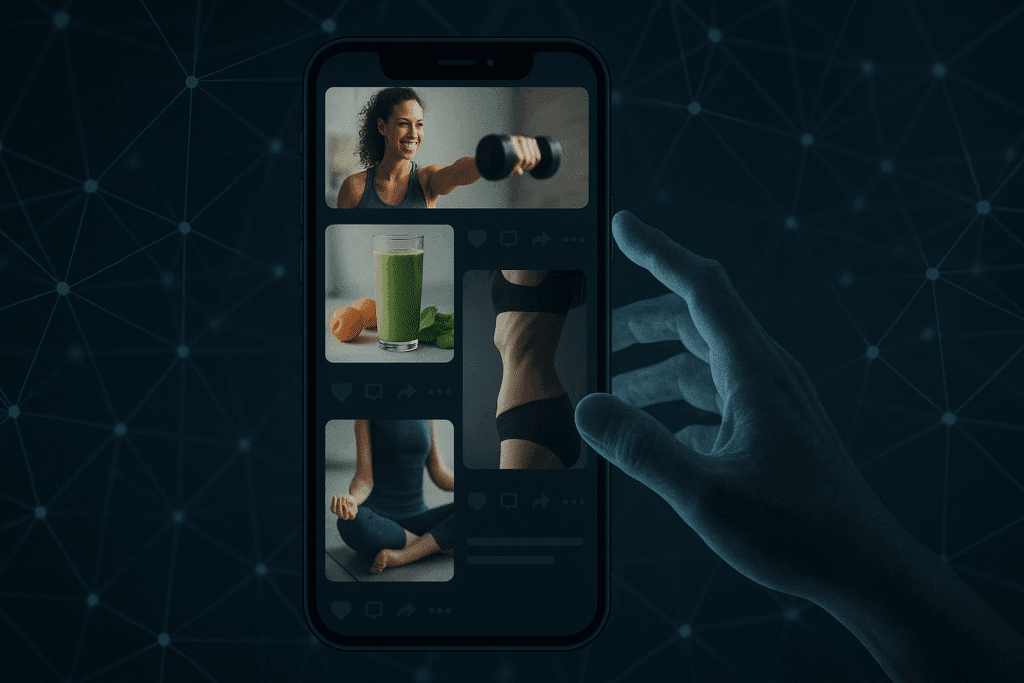
Supportive Alternatives to Pro Ana Sites: Building a Healthier Online Community
Understanding the psychological underpinnings of attraction to pro ana content is essential. Many individuals drawn to these sites are not merely seeking diet tips; they are looking for validation, community, and a sense of purpose. In a world that often equates thinness with worth, the pro anorexia tips found on these sites may appear to offer a pathway to societal approval and self-acceptance. Unfortunately, this pathway is built on the erosion of physical and mental wellness.
Prevention and Awareness: What Schools, Parents, and Clinicians Should Know
Recovery from eating disorders is a complex and deeply personal journey, one that is often undermined by the persistent presence of pro ana content online. Exposure to a single pro ana site during vulnerable moments can reawaken harmful thought patterns and reignite compulsive behaviors. Those in recovery must navigate not only internal battles but also external digital landscapes littered with triggers and misinformation.
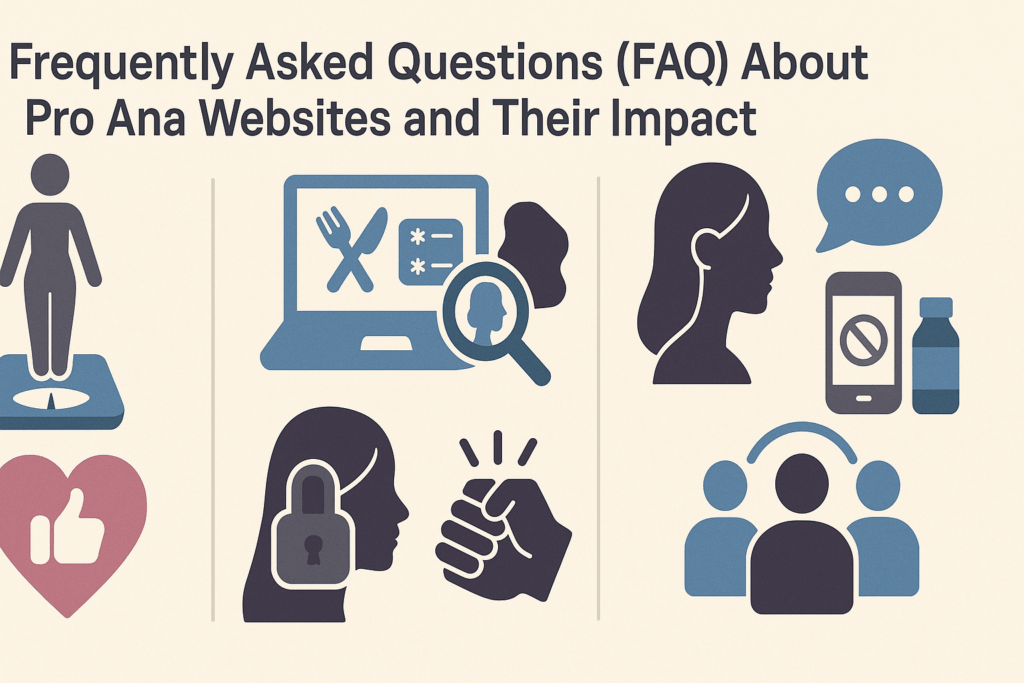
Frequently Asked Questions (FAQ) About Pro Ana Websites and Their Impact
What psychological needs do pro ana websites often fulfill that make them appealing to vulnerable users? Pro ana websites frequently provide a sense of community, validation, and identity for individuals struggling with low self-esteem or mental health challenges. Many users are drawn to these platforms because they offer structure and purpose, even if that structure revolves around harmful practices. The interactive features of a pro ana message board or a pro ana blog may simulate social support, leading users to believe they are part of an exclusive, understanding group. This sense of belonging, particularly for adolescents or individuals feeling isolated, can override concerns about health and safety. It becomes crucial to recognize that the appeal of the pro ana web often lies not just in the content but in the emotional void it temporarily fills.
How does the design of pro anorexia web platforms influence user behavior and belief systems? The aesthetic of pro ana websites is intentionally crafted to elicit emotional responses and reinforce disordered thinking. From curated thinspo websites filled with black-and-white imagery to the use of quotes that glorify pain and restriction, these platforms subtly manipulate viewers. A sleek pro ana homepage might feel like a wellness site at first glance, which masks its harmful intent and makes disinformation harder to detect. Visual minimalism and emotionally charged language can alter perception, making extreme weight loss seem aspirational rather than dangerous. Over time, these design choices can normalize unhealthy standards and integrate disordered beliefs into users’ self-concept.
In what ways has the evolution of social media platforms changed the dynamics of pro ana sites? While early pro ana sites existed as standalone blogs or forums, today’s pro pro ana culture has evolved to thrive on mainstream platforms like TikTok, Instagram, and even Reddit. This shift has decentralized content, allowing users to encounter pro ana diets or pro anorexia tips through algorithmic feeds rather than intentional searches. Hashtags, private groups, and aesthetic trends now act as coded language for spreading pro eating disorder messaging. Unlike traditional pro ana websites, which users had to actively seek out, today’s pro skinny websites and communities find their way to users through suggestion algorithms. This passive exposure can be especially harmful, as individuals may consume toxic content before realizing its impact.
How can parents or guardians identify subtle signs that a teen may be engaging with pro ana content online? Signs of interaction with pro ana sites can be subtle and easy to miss, especially when teens go to great lengths to conceal their behavior. Watch for sudden, extreme dietary changes, obsessive calorie counting, or secretive online habits involving pro ana web content. A shift in language—using terms like “ana mia,” “bonespo,” or referencing a specific pro ana blog—may also be a red flag. Changes in clothing choices, increased body checking, or avoidance of family meals can further suggest exposure to harmful communities. Open, nonjudgmental dialogue is key, as confrontation may lead to further secrecy or shame.
Are there any trends in how pro ana message boards are adapting to evade detection and moderation online? Yes, pro ana message boards and forums are increasingly using coded language, emojis, and slight misspellings to bypass moderation systems. For instance, a community may refer to “pro@m1a” or use hashtags like “#thinspo4life” to mask the intent of their content. Some pro ana blogs have shifted to private messaging systems or encrypted platforms, making them harder for authorities and parents to monitor. Additionally, many users now share links to “resource folders” that contain pro eating disorder tips, making harmful materials more portable and difficult to remove. These evasive tactics underscore the need for digital literacy programs that educate both youth and adults on how to spot and report such content.
What role do algorithms play in amplifying pro ana content across digital platforms? Algorithms prioritize content that elicits engagement, which often includes visually striking or emotionally provocative media. Unfortunately, this means that thinspo websites and pro ana diet videos can rise quickly in visibility due to likes, shares, and comments—even if those comments are negative. Once a user interacts with a single piece of pro anorexia web content, the algorithm may begin suggesting similar material, creating an echo chamber effect. This automatic reinforcement can entrench users deeper into pro mia and pro ana circles without their active consent. The role of algorithms highlights the responsibility of tech companies to actively refine content filters and integrate wellness-promoting interventions.
How can someone safely transition from a pro ana blog community into a recovery-oriented space? Making the shift from a pro ana homepage or message board to a recovery-focused environment is both challenging and transformative. The first step involves acknowledging the harm caused by participation in pro pro ana networks and seeking out safe, evidence-based resources. Supportive alternatives might include moderated online recovery forums, therapy-led groups, or even nutrition-focused social media influencers who promote body neutrality. Unlike pro anorexia tips that focus on restriction, these communities emphasize emotional healing, food freedom, and personal growth. Maintaining digital boundaries by unfollowing thinspo websites and curating a recovery-oriented feed can also reinforce new, healthier patterns.
Are there legal or policy efforts underway to limit the spread of pro eating disorder content online? There is growing interest among policymakers and advocacy groups to regulate the presence of pro ana websites and related content. While freedom of speech laws complicate broad censorship, many governments are pushing for platform accountability measures. For instance, platforms hosting a pro ana web community may be required to provide mental health disclaimers or redirect users to crisis resources. In some cases, lawmakers are proposing age restrictions or reporting mechanisms for content promoting a pro ana diet or other dangerous behaviors. The challenge lies in balancing user privacy with the urgent need to curb the influence of pro eating disorder content.
What long-term consequences can result from sustained engagement with pro ana content? The long-term risks of consuming pro anorexia web content extend far beyond immediate physical health concerns. Chronic exposure can impair emotional regulation, reinforce obsessive-compulsive tendencies, and contribute to social withdrawal. Individuals may internalize disordered beliefs to such a degree that they view pro eating disorder tips as lifelong truths rather than temporary coping mechanisms. Even after exiting a pro ana site or thinspo platform, the psychological residue may persist and interfere with relationships, career goals, and self-image. Sustainable recovery often requires therapy, nutritional rehabilitation, and community-based support to rewire the deeply embedded thought patterns fostered by the pro ana web.
What can digital wellness educators do to counteract the influence of pro ana sites in online spaces? Digital wellness educators are uniquely positioned to shift the narrative by promoting body literacy, media awareness, and self-compassion. By teaching users to critically evaluate sources, understand the proana meaning, and recognize manipulative content structures, educators help build resilience against harmful messaging. Workshops and school-based programs can include discussions about how pro ana sites operate and why pro skinny websites appeal to vulnerable users. Additionally, digital wellness leaders can collaborate with influencers to amplify recovery-focused voices and drown out the reach of pro pro ana platforms. This proactive, informed approach empowers individuals to navigate the online space with greater awareness and confidence.
Intersectional Issues: Gender, Trauma, and the Allure of Pro Mia Messaging
Health educators and mental health professionals can play a critical role in counteracting the influence of these sites. By teaching digital literacy and providing accurate, compassionate nutritional guidance, they help individuals distinguish between evidence-based wellness advice and harmful propaganda. Informed professionals can guide conversations about the dangers of pro ana web content, offering safe alternatives and validating the complex emotions that often accompany disordered eating.
Was this article helpful? Don’t let it stop with you. Share it right now with someone who needs to see it—whether it’s a friend, a colleague, or your whole network. And if staying ahead on this topic matters to you, subscribe to this publication for the most up-to-date information. You’ll get the latest insights delivered straight to you—no searching, no missing out.

